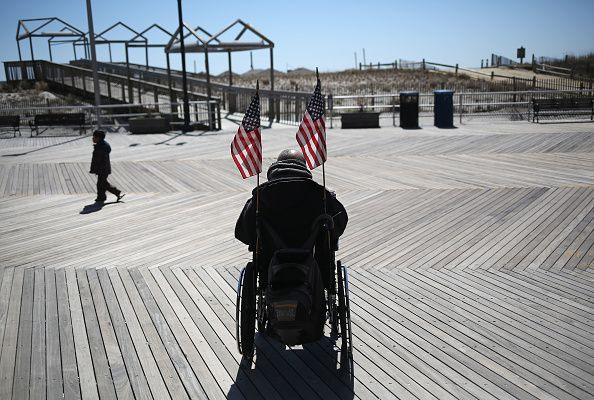Why We Only Remember Fragments Of Traumatic Memories, And How It Can Help Us Treat PTSD Flashbacks

Try to remember the details of a horrific event in your life. Easy, right? Now, try and recall what you were doing right before this memory was made. A bit more difficult? A new study has found that bad memories are easy to remember, but often remembered out of context because our brain activity fluctuates during traumatic moments. The findings could be helpful in developing new treatments and preventative measures for PTSD.
For the study, now published in Social, Cognitive and Affective Neuroscience, a team of researchers from University College London (UCL) in England had 20 volunteers placed in an MRI scanner as they were shown pairs of images to remember. Some of these pairs included a negative photo, such as a badly injured person, while others had neutral images. The volunteers were shown the images and asked if they had seen them before. If they had seen an image before, volunteers were asked whether they could remember the other image that had been presented along with it.
Results revealed that the negative images did have a profound affect on the volunteers’ memory. For example, on average, the volunteers were better at recognizing negative images than they were at remembering neutral images. This may be explained by the increased activity in the amygdala, a part of the brain used for processing emotional information, that was seen in MRI scans. On the other hand, the participants were worse at remembering which other pictures appeared alongside the negative ones. According to the study, this fragmented memory was reflected by reduced activity in the hippocampus. This area of the brain is responsible for forming associations between memories and helping us to ensure that during memory recollection all aspects of the memory are retrieved together and placed in the appropriate context.
"The imbalance between item memory and associative memory could lead to strong but fragmented memory for the traumatic content of an event, without the surrounding information that would put it in the appropriate context," says senior author Professor Neil Burgess, Director of the UCL Institute of Cognitive Neuroscience in a recent statement.
Burgess and his team believe the findings could help to explain the mechanism behind PTSD flashbacks. Flashback memories are a common occurrence in PTSD patients and can occur both at random or can be triggered by experiences somehow connected to the trauma. Currently doctors may suggest mindfulness training or even electric therapy to help control these sometimes debilitating memory flashbacks. However, understanding how and why these flashbacks occur on a neurobiological level could offer a way to help better control them.
According to the Center for Disease Control and Prevention, general anxiety disorders such as PTSD are the most common type of mental health disorder in the general population. But while figuring out new ways to help PSTD patients has been at the forefront of academic research, a study released earlier this month has suggested a way to prevent individuals from ever developing the condition in the first place.
The practice is known as concrete processing, and describes training your brain to think and process events differently. According to Dr. Rachel White, a clinical psychologist and author of the study, during concrete processing an individual is trained to focus on how a situation is unfolding, what is being experienced and what the next steps are.
“It differs from abstract processing, which is concerned with analyzing why something is happening, its implications, and asking ‘what if’ questions with no obvious answer,” said White in a statement.
According to her research, volunteers who practiced concrete thinking while being shown disturbing horror films displayed more resilience and experienced lower levels of distress than those who did not.
Source: Bisby J, Burgess N, et al. Social, Cognitive and Affective Neuroscience . 2016



























